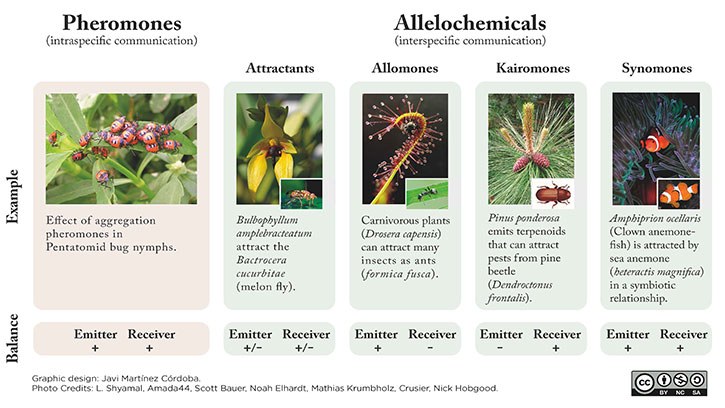Researchers find that chemical communication between living beings obeys the linguistic law of brevity
Clownfish (amphiprion ocellaris) are attracted to sea anemones (heteractis magnifica) in a symbiotic relationship, an example of allelochemical communication, which occurs between different species
A recent study shows that the chemicals used by living beings to communicate obey the linguistic law of brevity: just as the most used words in human language are shorter, the most frequent infochemicals in ecosystems tend to be shorter carbon chains. The study is co-authored by UPC researcher Antoni Hernández-Fernández and it delves into interspecies chemical communication.
Sep 20, 2022
The most widespread form of communication between living beings is through chemicals. However, the laws governing these channels of communication are still largely not well understood. In the paper “Compression principle and Zipf’s Law of brevity in infochemical communication”, published in the scientific journal Biology Letters, Antoni Hernández-Fernández, a researcher at the Relational Algorithmics, Complexity and Learnability Laboratory (LARCA) of the Universitat Politècnica de Catalunya · BarcelonaTech (UPC), and Iván González Torre, a researcher at the University of the Basque Country and the Technical University of Madrid, have sought, for the first time, evidence of one of the most well-known linguistic laws, Zipf’s law of abbreviation, in chemical communication.
Zip’s law of abbreviation, or simply brevity law, is the statistical tendency for the most frequent words to be shorter. Pervasive across human languages, does this law also apply to the substances that are used in chemical communication—the so-called infochemicals or semiochemicals? To answer this question, the researchers analysed the Pherobase database and found that, in general terms, it does: the most frequent infochemicals in ecosystems, those that are used by a greater number of species, tend to be shorter carbon chains. However, there is a notable exception when infochemicals are grouped by function: pheromones.
Pheromones are chemical substances used in communication between members of the same species, while allelochemicals are used for communication between different species, with diverse functions in ecosystems. An infochemical can have different functions, that is, it can be used as a pheromone by a species and, for example, as an attractant for another species—which is common in predators of the latter.
According to the study by Hernández-Fernández and González Torre, pheromones, statistically, do not obey the brevity law. This could have several explanations, according to the researchers: “First, the need to increase the complexity and length of substances when communicating with your own species to prevent predators from intercepting your signals and therefore from devouring you.” They also remark that: “Second, the fact that pheromones are not statistically brief may indirectly support the handicap hypothesis—classically formulated by Amotz Zahavi—according to which organisms could tend to waste energy on chemical signals as a strategy of reproductive ostentation”.
These explanations are pending future work that corroborates the results of this pioneering study, according to the authors, who point out that “specific analyses of the chemical channels of specific ecosystems are necessary, since the Pherobase data mix diverse ecosystems and allow only a general perspective.”
Chemical communication on Earth remains a mysterious field of study, even more so on other planets. The authors highlight that “the presence of infochemicals in the atmospheres of distant planets would be indirect evidence of the existence of life on those worlds.”
Substances in chemical communication
Chemical communication involves pheromones, which are chemicals used for communication between members of the same species—such as sex attractants used by many living beings in the reproductive period—and allelochemicals, which are used for communication between different species.
Allelochemicals can be classified according to their function. Attractants are chemicals that are not produced by the species involved but can attract both the producer and the receiver, just like many substances that humans synthesise. Allomones benefit only the producer, as in the case of the infochemicals produced by carnivorous plants before capturing their prey. Kairomones benefit only the receiver, as in the case of the terpenoids produced by pine trees that attract pine shoot beetles, which harm the tree. Finally, synomones are attractants produced in symbiotic relationships, which benefit both species, as in the case of clown fish and sea anemones.


